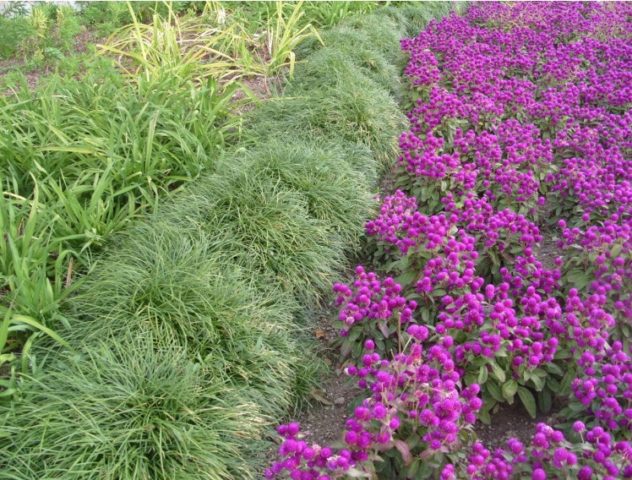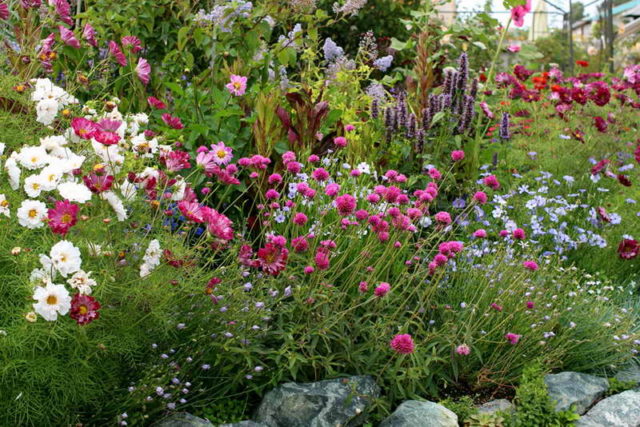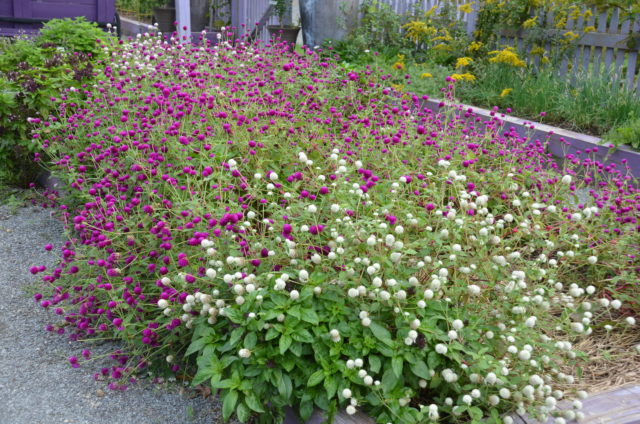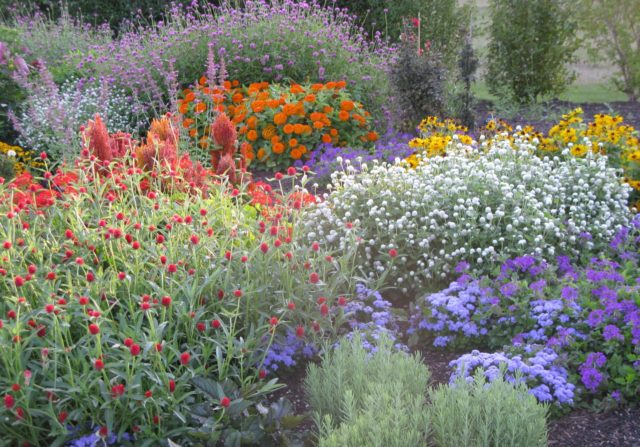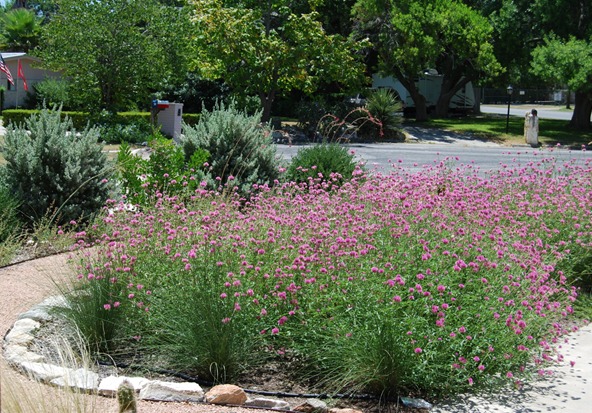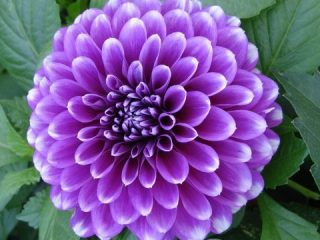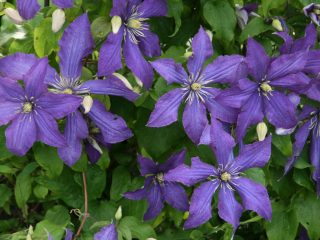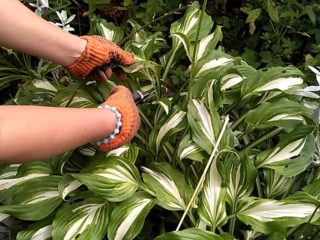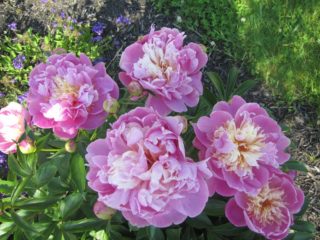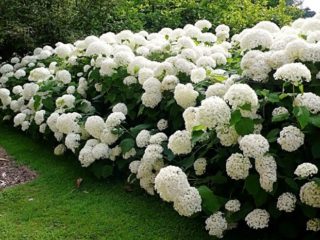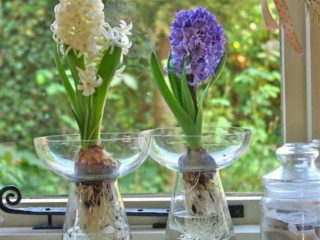Content
Growing gomphrena from seeds begins at the end of February. The plant is very thermophilic, so at the first stage you need to create a high temperature. Gomphrena is transplanted into open ground at the end of May or even at the beginning of June. Caring for the crop is very simple: even in the absence of fertilizing (but sufficient moisture), flowers will appear until the beginning of October.
Full description of gomphrena
Gomphrena is a perennial flowering plant belonging to the Amaranth family. In nature, it is found in tropical zones, but thanks to breeding work, the plant has been adapted to a more severe climate. Therefore, many types and varieties of gomphrena are grown freely in Russia.
The plant is not very tall (up to 20-40 cm), so its life form is grass (annual and perennial).The leaves are small in size, with short petioles, and herbaceous green in color.
Gomphrena flowers are small, organized into spherical inflorescences, the diameter of which is 3-4 cm. Various colors:
- white;
- pink;
- purple;
- orange;
- carmine;
- lilac;
- fuchsia.
Gomphrena flowering begins in mid-July and continues until the first frost. In most regions, the process lasts until the beginning of October, in the south - until the end of the month. Gomphrena is unpretentious: the flower does not require special care. However, the crop needs good lighting, so it is better to plant the plant in open areas.
Types and varieties
There are more than 100 different types and varieties of gomphrena. They differ in height, leaf shape and flower color.
Globular
This is the most popular variety. The spherical gomphrena grows up to 30-40 cm in height. Its leaves have slight pubescence, so they often appear bluish. The flowers of the plant are red, crimson, lilac and white. This species consists of several varieties: Fireworks, Bright Border, Buddy, Raspberry Berry, Pompom, Globoza, Gnome.
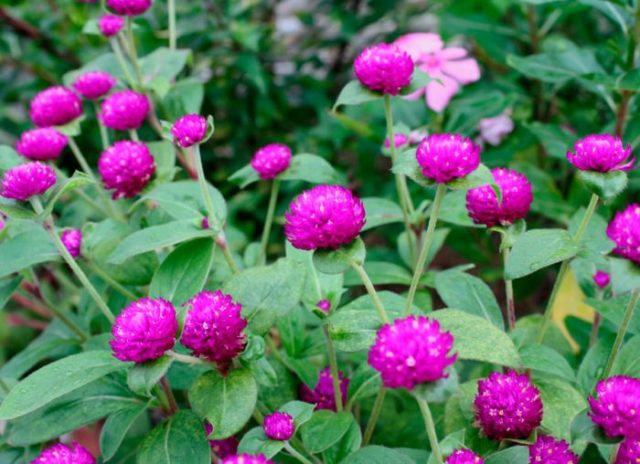
Gomphrena's purple flowers pair well with rich green leaves.
Absent-minded
A variety with creeping shoots that quickly grow throughout the area. Therefore, scattered gomphrena is used as a ground cover and is also planted in flower pots. The flowers of the plant are greenish, with graceful yellow stamens. The leaves are elongated, rich green.
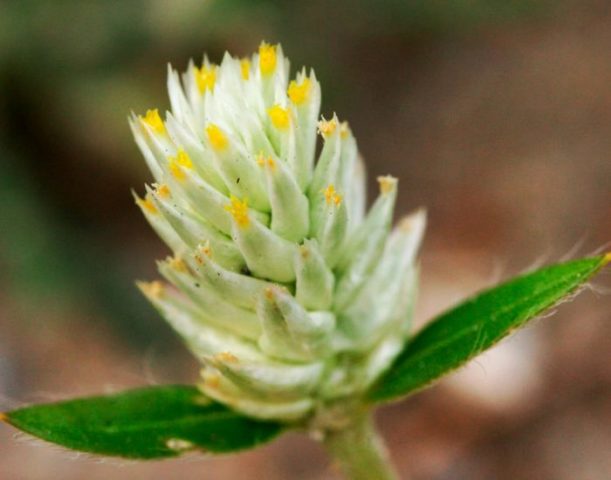
The Gomphrena diffuse flower resembles a miniature green cone
Gomphrena Haage (golden-flowered)
This is one of the most beautiful views. The shape of the leaves of Gomphrena Haage is similar to the classic spherical one, but differs in a large number of flowers with bright orange and red colors.This species is characterized by being thermophilic. Therefore, if the summer is cool and cloudy, flowers may not appear on the plant at all.
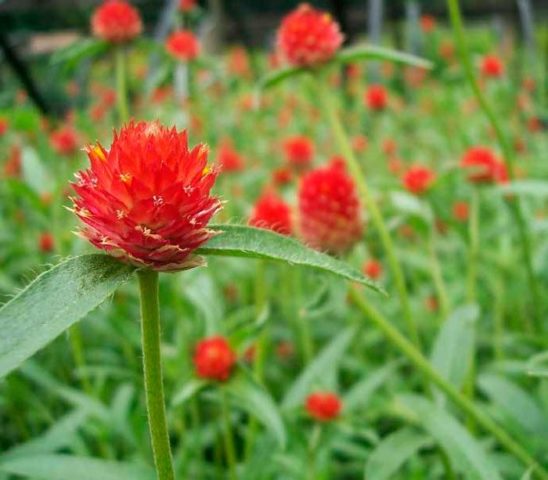
Gomphrena goldenflower got its name due to its bright, attractive flowers.
Purple
Produces many spherical inflorescences with a diameter of 30-40 mm, the color is rich purple. Pairs well with light green leaves.
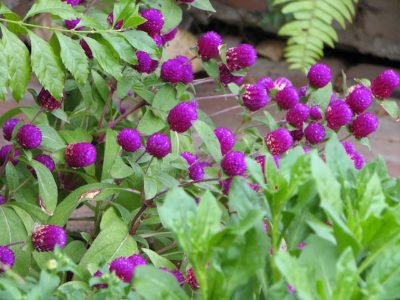
The height of the Gomphrena purpurea bush reaches 20-30 cm
Strawberry
One of the tallest bushes, reaching 50 cm, is the strawberry variety. The flowers are bright red, with yellow stamens, and look like ripe berries. This plant needs good lighting and loose, light soil. If summer and autumn are warm, then strawberry gomphrena blooms from June to early October.
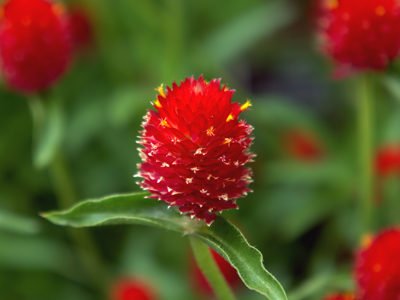
In appearance, the flowers of this gomphrena resemble ripe strawberries
Dwarf
This variety is distinguished by its small size - the stems grow no more than 10-15 cm. Therefore, flower growers even called it “Gnome”. The flowers are spherical, double, white, pink and rich red (carmine) in color. The plant can be used in flower pots. The crop is also great for creating a flower border.
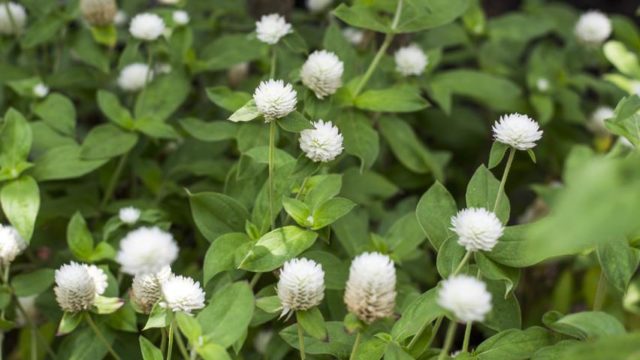
The low-growing bush of dwarf gomphrena produces a large number of graceful white or pink, red flowers
Application in landscape design
Culture can enliven a space and fit harmoniously into the design of any garden. Gomphrena is used in various versions:
- Single plantings - the flower is suitable as a ground cover. Gomphrena hides the soil well and decorates nondescript corners. In addition, it looks great in a flower bed (even without adding other ornamental plants).
- Mixborders, gomphrenal plantings along paths.
- Flower borders.
- Rock gardens.
- Floor vases and flowerpots on the veranda.
- Planting on the shore of a reservoir.
The photo shows that the gomphrenas in the flowerbed are combined with wildflowers. They can also be used in compositions with asters, petunias, daisies and many other plants. The main condition is the correct combination of colors and tiers. As a rule, gomphrenas are planted along the edges of the flower garden.
The bushes are small, so they need to be placed in the foreground.
The best option is to plant gomphrena next to plants of the same height.
A harmonious combination can be achieved by planting several species with flowers of different colors on the site.
A composition with gomphrenas and decorative greenery looks bright and attracts the eye.
A single planting in a flowerbed requires virtually no maintenance, but still looks decent.
Features of reproduction
Compared to many other flowers, gomphrena can only be propagated by seeds. They are purchased in stores, prepared in February and begin to be planted in early March. It is not possible to propagate a flower vegetatively (by cuttings, layering). Despite this, all efforts will pay off: spherical graceful flowers perfectly decorate the garden.
Planting gomphrena seeds for seedlings
Growing gomphrena flowers is possible by sowing seeds into seedlings. They should not be planted in open ground, since even in the southern regions they may not sprout.
Deadlines
Sowing of seeds begins at the end of February or at the beginning of March. In greenhouse conditions (at home), seedlings grow for at least 2.5 months. They are transferred to open ground at the end of May (specific dates depend on the climatic characteristics of the region).
Preparing containers and soil
The soil for gomphrena should be sufficiently fertile and, most importantly, loose and loose.You can purchase universal soil for seedlings or make a mixture yourself from garden soil and humus, taken in equal quantities. The earth is moistened abundantly, but in moderation. If you take soil and squeeze it into a ball and then throw it on the table, the soil should disintegrate.
To grow seedlings, you can use any containers - wooden boxes, cassettes. After picking, the seedlings are grown in plastic cups or peat pots. The latter option is more convenient - when transplanting into open ground, the gomphrena seedling does not need to be dug up. It is enough to transfer it to the flowerbed along with the pot, without contacting the root system.
Sowing algorithm
The seeds need to be prepared first. To do this, they are placed in a container and filled with warm water for 1 day. Stir occasionally, then drain the water. This is repeated 2 more times (3 days in total). Then the gomphrena seeds are thrown onto a sieve and washed with warm water. Place in an airtight jar, cover with a lid and put in the refrigerator for 7-10 days.
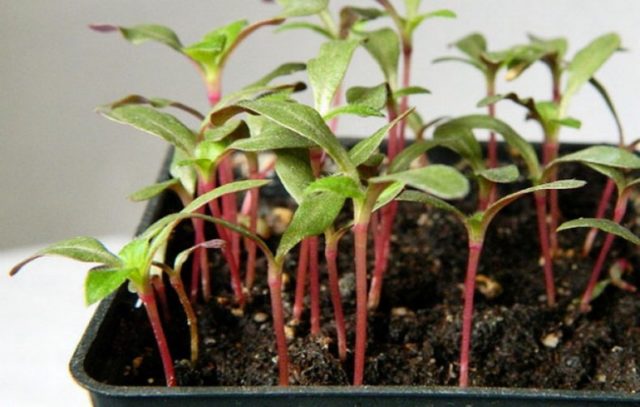
The first shoots of gomphrena seedlings appear in 5-10 days
During landing, proceed as follows:
- The soil is placed in containers and watered well.
- Gomphrena seeds are taken out of the jar and immediately laid out in 1-2 pieces. into the cassette to a depth of 0.5-1 cm.
- Lightly sprinkle the top with earth, do not compact it.
- Cover with film or cellophane with holes and put in a very warm place. Suitable temperature is 30-35 °C.To do this, containers are placed next to heating devices.
Seedling care
In 5-10 days the first shoots of gomphrena will appear. At this point, the film must be removed, and the containers themselves must be moved a little further from direct sunlight. In this case, the temperature must be maintained at the same level.
The soil is loosened 2-3 times a week, trying not to damage the roots. Watering is carried out with the same regularity, but it is important not to violate the norm, otherwise the gomphrena may get blackleg (the stems will become limp and turn black), and it will be difficult to cure the seedlings.
2 weeks after the appearance of the first shoots, gomphrena seedlings are planted in individual containers. After this, the temperature can be reduced to 25-26 ° C (in any case, it should remain above room temperature). 1-2 weeks before transplanting into open ground, it can be grown under normal conditions (18-22 °C).
Planting and caring for gomphrena in open ground
It is not difficult to plant gomphrena flowers on your site, the main thing is not to rush: the plant is very heat-loving, so you need to wait until the soil and air warm up completely.
Recommended timing
Since gomphrena is thermophilic, it can be transferred to open ground only at the end of spring, when there is no threat of return frosts. The specific timing of transplantation depends on the region:
- Moscow region and middle zone - end of May;
- Ural, Siberia, North-West and Far East - early June;
- southern lands - the first ten days of May.
Site selection and soil preparation
Gomphrena is very thermophilic, so the place for planting it should be:
- open (no shade);
- moist, but not swampy (lowlands are undesirable);
- protected from drafts.
The soil for the flower should be light and fairly fertile, with a neutral reaction.The area is pre-cleared and dug up. If necessary, apply complex mineral fertilizer in an amount of 50-60 g per m2. Prepare several shallow holes at a distance of 30 cm for tall varieties and 20 cm for short ones.
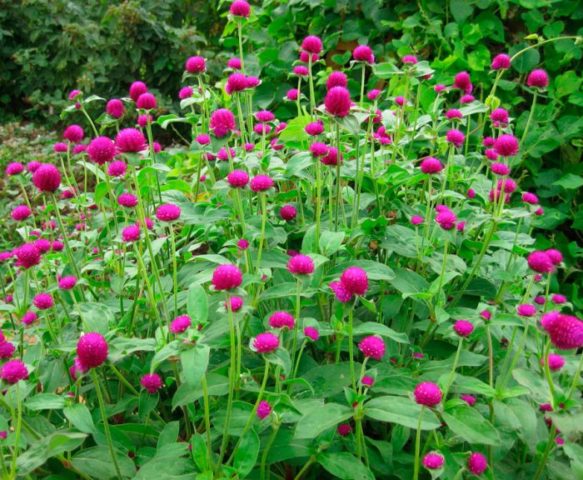
The flower loves open, sunny places
Landing rules
Gomphrena planting algorithm:
- The holes are drained with small stones and pebbles.
- If the soil is infertile and no fertilizing has been applied previously, add 1 tbsp to the turf soil. l. potassium salts and superphosphate (or 1 tbsp. wood ash) for each well.
- The seedlings are carefully removed from the cassettes or transferred directly into peat pots.
- Then they sprinkle it with earth, but do not compact it - the soil should remain loose.
- Water moderately with settled water at room temperature.
Watering and fertilizing schedule
Gomphrena needs regular but moderate watering. Those. The soil should not dry out, but it should not be too wet and “stick” to your hands. Therefore, in the absence of precipitation, watering is carried out weekly, and in the presence of rain, additional moisture is not given. From the beginning of autumn, watering is stopped completely, but if the weather is dry, you can give a little water.
If there was no fertilizing when planting the gomphrena flower, then a few days later it is recommended to apply complex mineral fertilizer (it is first dissolved in water according to the instructions).There is no need to add additional fertilizing in the future - even without them the crop will feel comfortable.
Weeding, loosening
Weeding is carried out as necessary.
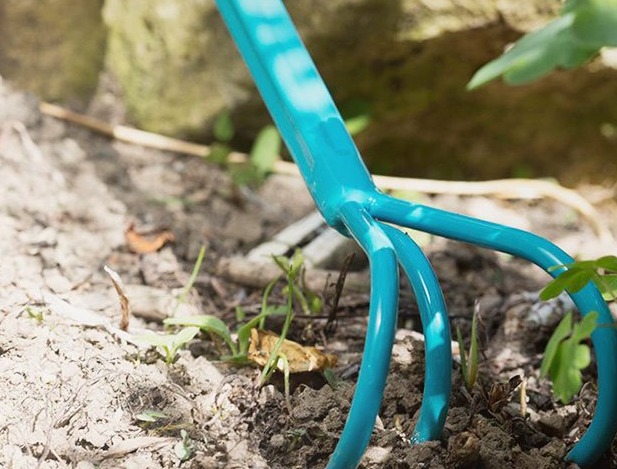
Loosening should be done regularly, especially before watering and fertilizing
In this case, the moisture will spread faster through the soil, and the roots of the plant will be saturated with oxygen. The flower does not require special care, so growing it in the garden is very simple.
Wintering
There are two ways to preserve gomphrena in winter:
- Mulching and covering.
- Transplanting the plant into a pot.
The first option is suitable for the south, as well as for the middle zone (if the variety is winter-hardy). In mid-October, the gomphrena bush is completely cut off and covered with mulch - dry leaves, straw, spruce branches. Then the plant is covered with spunbond and film on top.
The second option for wintering gomphrena is suitable for all other regions. At the end of September, the bushes are transplanted into spacious pots and taken home. In winter, plants are kept in a warm and dry place. Watering is rare, fertilizing is excluded.
Diseases and pests
All types of gomphrena flowers are characterized by good resistance to both diseases and pests. But sometimes they can suffer from blackleg or cercosporiosis. Aphids also like to parasitize on the stems and leaves of gomphrena.
Disease/pest | How to identify (signs) | What to do (control methods) |
Cercosporiosis | Leaf plates become deformed and dark spots appear on them | Treat with fungicides: “Tattu”, “Fitosporin”, “Profit”, “Agat” |
Blackleg | Stems turn black and become weak | Stop watering completely, loosen the soil well and sprinkle the surface layer with wood ash |
Aphid | Insects on leaves, plaque, mucus | Treat with a solution of wood ash, liquid soap or insecticides (Fufanon, Iskra, Biotlin, Decis) |
Conclusion
Growing gomphrena from seeds can be done at home. But for this you need to create a suitable temperature (30-35 ° C at the initial stage). In the future, care for the plant is minimal: after transplanting the gomphrena into open ground, it does not even need to be fed.
